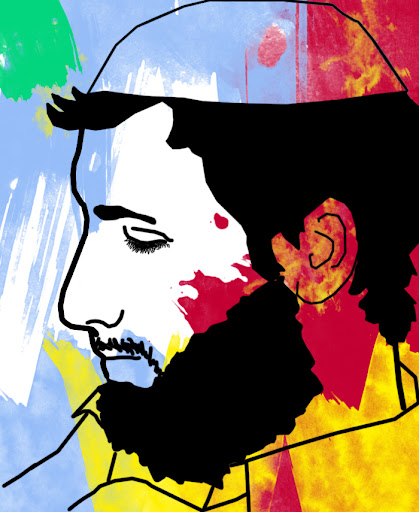When I first entered Yeshiva, black or blue velvet tefillin bags, with 770, Crowns or (oddly) Sheaves of Wheat were the standard for teffilin bag art. These bags were then shoved with a chitas and a pushka into a plastic vinyl bag.
Suddenly, though, double bags - like mini-tallis bags that could hold both Rashis and Rabeinu Tams - came on to the scene. At first they were velvet, but soon leather bags became the standard.
I desperately wanted one - but for whatever reason, it never came to be.
 |
| Holding my original, velvet, tefillin bag. |
Flash forward to the time before my wedding. Now, at last, I could get real double bag. This one would be for my tallis of course . . .
At first my shiny, black new bag was very exciting. Soon, however, I began to notice various flaws in its design. As anyone who followed me on Twitter may recall, the shoulder strap for the bag was attached by a snap. One wrong turn or the like, and the snap would come undone - leaving the tallis bag to fall to the ground. What was more, the leather was of poor quality. It felt stiff and the suede on the side quickly tore.
When Chana surprised me with a new Tallis bag as an anniversary present last year, I was more than ready to switch.
The bag, designed by
Aliza Judaica Creations, was worlds beyond the previous one.
The shoulder strap attaches to the side with swivel snap hooks - so no worries about it falling.
As to the bag itself, made with soft
Corinthian leather, it still looks remarkable after a year of use. The custom embroidering on the bag still looks sharp as well. While this bag doesn't fall, thanks to an actual working shoulder strap, it still gets considerable millage between all the trips to shul, in the car and on the plane. The fact that it's held up so well is truly a testament to its remarkable craftsmanship.
This is the second product we've gotten from Aliza (the first being the gorgeous challah cover I gave Chana for her birthday) and we can't recommend her work more highly.
Read More...
Summary only...

















































































